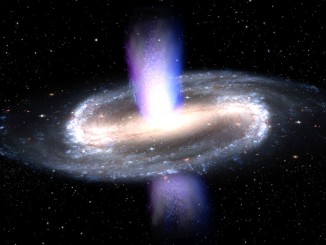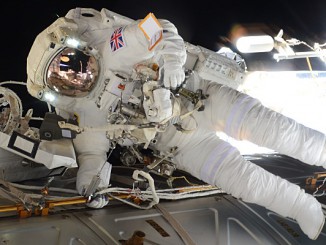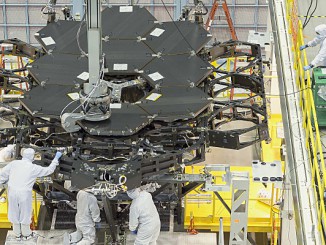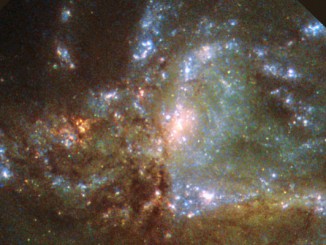
European Space Agency



A Milky Way twin swept by an ultrafast X-ray wind
ESA’s XMM-Newton X-ray space observatory has found a wind of high-speed gas streaming from the centre of a bright spiral galaxy like our own that may be reducing its ability to produce new stars. The Seyfert galaxy, known as IRAS17020+4544 and located 800 million light-years from Earth, has a supermassive black hole at its core with a mass of nearly six million Suns.

Herschel reveals filaments in the Serpens Core
This image from ESA’s Herschel space observatory shows the Serpens Core, the heart of a giant molecular cloud. These giant clouds are complex formations, most often made up of filaments mixed with clumpy and irregular folds, sheets and bubble-like structures. A typical spiral galaxy like the Milky Way can contain thousands of them.

Tim Peake’s Principia spacewalk
European Space Agency astronaut Tim Peake pictured during his 4 hour 43 minute spacewalk to replace a failed power regulator and install cabling on the International Space Station. Tim commented on this image: “Today’s exhilarating spacewalk will be etched in my memory forever — quite an incredible feeling!”


No. 9 Rosetta rides with its comet
While 2014 was the year the Rosetta spacecraft celebrated making it into orbit around a comet, 2015 was the year it got down to some serious hard work. Its comet, with the tongue-twisting name 67P/Churyumov–Gerasimenko, made its closest approach (186 million kilometres) to the Sun, a period known as perihelion when the comet would be expected to be at its most active. Rosetta was there to witness this.

James Webb Space Telescope mirror installation halfway complete
Inside NASA’s Goddard Space Flight Center’s massive clean room in Greenbelt, Maryland, the ninth flight mirror was installed onto the James Webb Space Telescope’s structure with a robotic arm. After being pieced together, all 18 primary mirror segments will work together as one large 6.5-metre mirror. The full installation is expected to be complete early in 2016.

Hubble sees two galaxies become one
This image, taken with the Wide Field Planetary Camera 2 on board the NASA/ESA Hubble Space Telescope, shows the galaxy NGC 6052, located around 230 million light-years away in the constellation of Hercules. It is a “new” galaxy in the process of forming, the result of a merger between two separate galaxies that were gradually drawn together by gravity.

Sparkling Stephan’s Quintet
The Stephan’s Quintet of galaxies in the constellation Pegasus was discovered by astronomer Édouard Stephan in 1877. This image combines observations performed at three different wavelengths, with ESA’s Herschel and XMM-Newton space observatories as well as with ground-based telescopes, to reveal the different components of the five galaxies.
